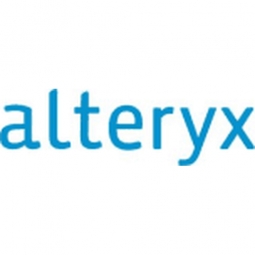下载PDF
Building a ‘Super System’ for Student Planning + Income Modelling
技术
- 分析与建模 - 大数据分析
- 分析与建模 - 数据即服务
适用行业
- 教育
适用功能
- 商业运营
服务
- 数据科学服务
挑战
诺丁汉大学是英国最大的大学之一,该大学每年需要预测其学生人数和相关收入,以便分配部门预算。规划和绩效团队负责收集和分析全球数千名学生的多达 900 万条数据记录,以准确模拟预期的学生人数和活动。但是,由于 56 个部门需要深入的分析粒度和五年预测,因此计算非常复杂。到 2015 年,该团队迫切需要一个更具动态的学生规划模型,该模型可以提高粒度并随后改善决策,同时与 Tableau 的数据可视化配合使用。该任务是处理学生规划和预测的所有报告以及为 HESA(高等教育统计局)验证数据,该机构负责收集有关英国高等教育的定量数据。
关于客户
诺丁汉大学是英国最大的大学和研究机构之一。它在英国几大大学排行榜中名列前 20 名,并跻身全球前 100 名大学之列。该大学培养了许多杰出校友,并创造了许多突破性的发明,包括 MRI 扫描仪。该大学拥有来自世界各地的约 45,000 名学生,分布在诺丁汉、马来西亚和中国的多个校区。该大学与世界各地的其他大学和公司有着密切的联系,提供 800 多门课程,涵盖医学、科学和工程、社会科学和艺术等各个领域。
解决方案
诺丁汉大学的规划和绩效团队最初利用 Alteryx 来清理和准备 Tableau 的数据,方法是完全废弃数据仓库中的学生元素,并在 Alteryx 中重建一个包含 10 年学生数据的新数据集。如今,所有学生规划和资金的分析和预测都是通过 Alteryx 进行的。该大学的院系分为 56 个预算单位,所有部门都希望了解 15 种不同的收入来源。加上 24 种学生类型、提供的所有课程,需要建模的单元超过 80 亿个。深入研究学生历史可以揭示当前、返校和新生人数、他们将学习什么以及预计的费用和其他资金收入。然后,团队添加了更复杂的查询以提供更深入的见解,例如谁是全日制还是非全日制、本科生、研究生还是研究生研究型、哪些学生是国内学生还是海外学生、谁是在课程中途加入的等等。一旦循环完成,结果将传输到 Tableau 进行检查,然后再将报告分发给大学部门或将数据提交给 HESA。
运营影响
数量效益
相关案例.

Case Study
IoT platform Enables Safety Solutions for U.S. School Districts
Designed to alert drivers when schoolchildren are present, especially in low-visibility conditions, school-zone flasher signals are typically updated manually at each school. The switching is based on the school calendar and manually changed when an unexpected early dismissal occurs, as in the case of a weather-event altering the normal schedule. The process to reprogram the flashers requires a significant effort by school district personnel to implement due to the large number of warning flashers installed across an entire school district.

Case Study
Revolutionizing Medical Training in India: GSL Smart Lab and the LAP Mentor
The GSL SMART Lab, a collective effort of the GSL College of Medicine and the GSL College of Nursing and Health Science, was facing a challenge in providing superior training to healthcare professionals. As clinical medicine was becoming more focused on patient safety and quality of care, the need for medical simulation to bridge the educational gap between the classroom and the clinical environment was becoming increasingly apparent. Dr. Sandeep Ganni, the director of the GSL SMART Lab, envisioned a world-class surgical and medical training center where physicians and healthcare professionals could learn skills through simulation training. He was looking for different simulators for different specialties to provide both basic and advanced simulation training. For laparoscopic surgery, he was interested in a high fidelity simulator that could provide basic surgical and suturing skills training for international accreditation as well as specific hands-on training in complex laparoscopic procedures for practicing physicians in India.

Case Study
Implementing Robotic Surgery Training Simulator for Enhanced Surgical Proficiency
Fundacio Puigvert, a leading European medical center specializing in Urology, Nephrology, and Andrology, faced a significant challenge in training its surgical residents. The institution recognized the need for a more standardized and comprehensive training curriculum, particularly in the area of robotic surgery. The challenge was underscored by two independent studies showing that less than 5% of residents in Italian and German residency programs could perform major or complex procedures by the end of their residency. The institution sought to establish a virtual reality simulation lab that would include endourological, laparoscopic, and robotic platforms. However, they needed a simulator that could replicate both the hardware and software of the robotic Da Vinci console used in the operating room, without being connected to the actual physical console. They also required a system that could provide both basic and advanced simulation training, and a metrics system to assess the proficiency of the trainees before they performed surgical procedures in the operating theater.

Case Study
Edinburgh Napier University streamlines long-distance learning with Cisco WebEX
• Geographically dispersed campus made in-person meetings costly and inconvenient.• Distance-learning programs in Malaysia, India, and China required dependable, user-friendly online tools to maximize interaction in collaborative workspaces.• Virtual learning environment required a separate sign-in process, resulting in a significant administrative burden for IT staff and limited adoption of collaboration technology.

Case Study
8x increased productivity with VKS
Before VKS, a teacher would spend a lot of time showing a group of 22 students how to build a set of stairs within a semester of 120 hours. Along with not leaving the teacher much time to provide one-on-one support for each student to properly learn carpentry, it also left a considerable amount of room for error. Key information would be misinterpreted or lost as the class was taught in the typical show-and-tell way.

Case Study
Scalable IoT Empowering GreenFlex's Sustainable Growth
GreenFlex, a company that supports sustainable development, decarbonization, and energy efficiency, faced several challenges in its quest to expand its business. The company needed to deploy a robust and sustainable IoT technology to support its growth. It was crucial for them to monitor and control devices at customer sites in a safe and reliable manner. They also needed to integrate devices across a range of communication protocols and gather and act on data to meet efficiency targets. GreenFlex had previously built IoT capabilities into its digital platform, GreenFlexIQ, to monitor and manage customer sites remotely. However, they soon realized that they needed a new platform to support their ambitions. They needed a platform that could scale to connect more devices for production management and make it easier for the operations team to manage devices in the field.





